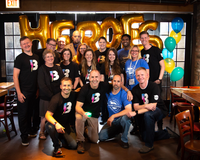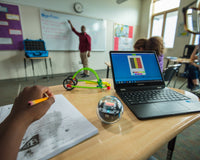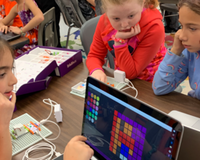As we enter 2021, we begin a new year and a new semester for remote learners. Many students throughout the United States are heading back to remote learning environments after their holiday break. That leads parents and educators to wonder how they can promote re-engagement and motivation for students at a time when remote learning burnout can be at an all-time high.
Parents can help their children refresh many "lost skills" at home. For example, because no primary focus exists in remote learning environments, parents can expand their knowledge using resources like National Geographic online or by going on virtual field trips.[1] [2] Other areas not closely monitored in remote learning environments include handwriting, reading, and spelling. However, parents can refresh their children's knowledge in this area using fun apps, games, and websites [3].
Nine Ways to Re-engage and Motivate Remote Learners
As an educator, use these tips to enhance your remote learner's learning experience:
1. Keep Sessions Exciting
Students will more likely engage in a fun and exciting lesson. Opening with something that grabs a student's attention reflects an excellent way of engaging them within the first few seconds of the session. For example, educators can present attention-grabbing information, including facts or challenges that stimulate thought.
2. Use the 10-2-2 Strategy
Using the 10-2-2 strategy means that educators spend ten minutes delivering a lesson, give students two minutes to process it as a group, and then two additional minutes to process information individually.[4]
3. Break Down Interactive Barriers
It's impossible to work with students face-to-face when they must participate in an online classroom. You can break down interactive barriers and reduce distraction by avoiding PowerPoint slides and choosing interactive tools for your content and curriculum. For example, you can use interactive parallax and panning slides to add interest and excitement to presentations.[5][6]
4. Use Closed Captioning
Sometimes it's challenging for students to hear a presentation. So, you should consider enabling closed captioning. For example, if you use PowerPoint Office 365, the words you speak will transcribe automatically as on-screen captions throughout the presentation. This student engagement strategy remains advantageous for students who might be hard of hearing.
5. Show and Don't Tell
Information will not be useful to students just because you tell them they must know it. Children are naturally curious, and many will question everything, including the contents of your lesson plan. Show them how the lessons you deliver applies to their everyday lives. You can do this using videos, interactive games, virtual labs, STEAM activities, and more.
6. Enhance Engagement with Collaboration
You'll find better student outcomes when they can engage and collaborate with their peers. Collaborative learning remains beneficial to students because it develops higher-level thinking, leadership, oral communication, and self-management skills.[7] You'll also find an increase in student responsibility, retention, and self-esteem.[7]
7. Do the Unexpected
Your students expect to see lessons, presentations, and delivery of other material. They don't expect you to crack jokes, talk about fun trivia, or solve a puzzle. Adding surprise elements into your lesson plan represents an excellent method of promoting student engagement in a fun way. For example, you can randomly ask students to get up and do jumping jacks. You can also break up the lesson's monotony by asking different students to tell their favorite joke during each session.
8. Collaborate with Students
While students need to collaborate with their peers, they also need to collaborate with you. Yes, you teach them daily, but this kind of collaboration extends beyond that. You will be providing regular feedback for them to understand how they perform during their remote learning experience. This collaboration also encourages students to ask questions and share their thoughts during each session.
9. Get to Know Your Students
Even though you spend hours weekly educating your students, you may not really know them or what they like to do during their off-time. You know their name and other details about their background, but that doesn't tell you anything about their interests, likes, or dislikes. Send periodic emails to your students to check on their health, ask about challenges they might be facing, or simply to say hello.
Using Sphero’s Remote Learning Resources
Student engagement strategies can be implemented when you have the right tools at your disposal. Educational tools like Sphero robots, littleBits, and activities in Sphero Edu and littleBits Classroom, represent excellent tools for introducing students to STEM. Engaging, hands-on activities remain critical tools when you are looking to motivate students. Your students have opportunities to learn essential STEM skills, including coding, circuit boarding, robotics, and more, no matter where their learning environment takes them.
To learn more about how the Sphero ecosystem of STEM education fits into your remote learning and student engagement strategies, check out our full assortment of programmable robots and Bits, apps, content, and curriculum on sphero.com.
Interested in learning more about how to re-engage remote learners? Watch our recent webinar on-demand here.
Sources:
[1] Society, N. (n.d.). Learn at Home: Grades 6-12. Retrieved January 14, 2021, from https://www.nationalgeographic.org/topics/middlehigh-school-resources-remote-learning/?q=&page=1&per_page=25
[2] Social Studies - SS Remote Learning Resources & Ideas. (n.d.). Retrieved January 14, 2021, from https://sites.google.com/dpi.nc.gov/social-studies/covid-19-remote-learning/ss-remote-learning-resources-ideas
[3] Favorite Phonics Games, Apps, and Websites. (2020, March 20). Retrieved January 14, 2021, from http://www.commonsense.org/education/top-picks/favorite-phonics-games-apps-and-websites
[4] Student Engagement and Coaching Around the 10 – 2 – 2 Strategy. (n.d.). Retrieved January 14, 2021, from http://www.reachinst.org/2017/08/22/student-engagement-and-coaching-around-the-10-2-2-strategy/
[5] PARALLAX SIMULATION. (n.d.). Retrieved January 14, 2021, from https://wp.nyu.edu/tlt/learning-experience-design/interactive-development/portfolio/parallax-simulation/
[6] How to use video and animation effects. Lesson 4. (n.d.). Retrieved January 14, 2021, from https://education.microsoft.com/en-us/course/ad1b5fd9/8
[7] Collaborative Learning. (n.d.). Retrieved January 14, 2021, from https://teaching.cornell.edu/teaching-resources/engaging-students/collaborative-learning










